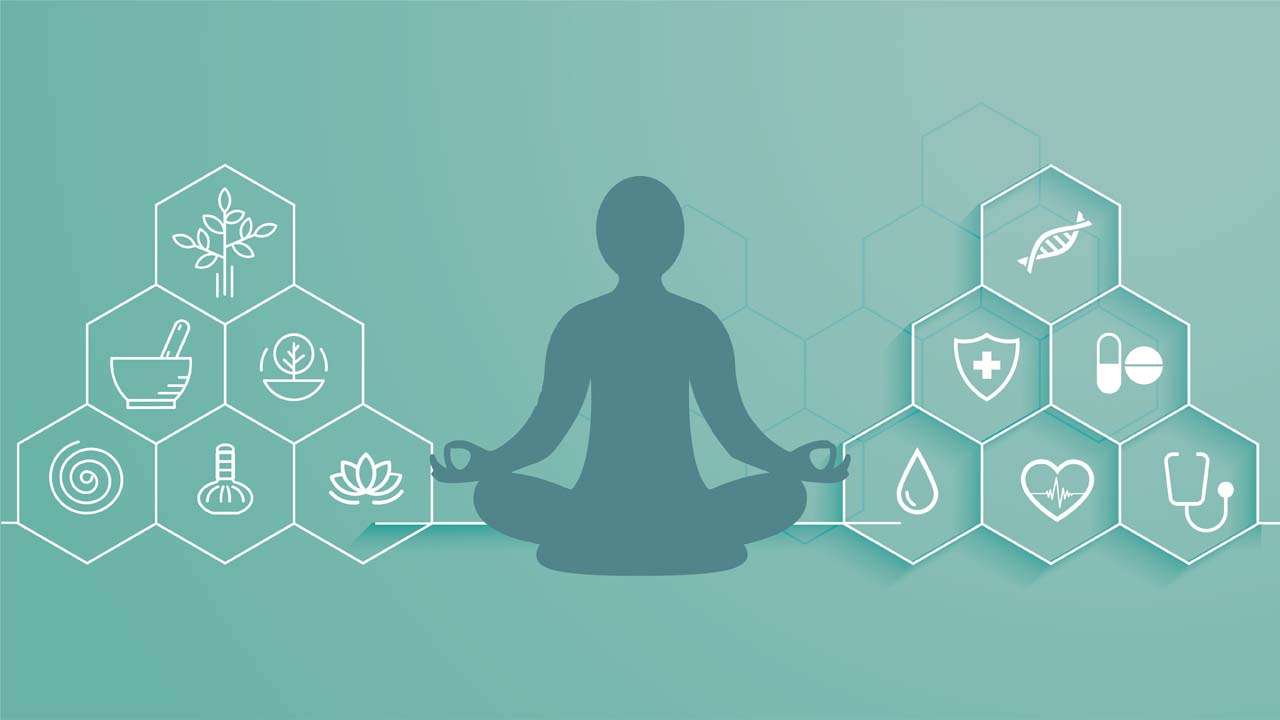People are waking up to the preventive healthcare benefits of ayurveda, the ancient system of holistic health and healing

One of the world’s oldest healing systems for holistic health, Ayurveda is as much a way of living life, as it is a healing science. The ayurvedic system of medicine is highly oriented towards maintaining the health of an individual rather than just treating disease.
Sedentary lifestyles, poorly chosen diets, substance abuse, stressful routines and pollution are causing rampant health challenges in urban areas across the globe. According to a review, city living seems to worsen various health issues in developing countries – chronic diseases, overweight children, metabolic disorders and low fertility rates, to name a few. This gives a glimpse of the looming health crisis, if a course correction is not done.
Ayurvedic living holds an effective response to these challenges. Conscious lifestyle choices based on the ageless ayurvedic principles of health can keep you away from the adverse health effects of the various demands of life. Ayurvedic healthcare can prevent and treat many lifestyle disorders without using chemical drugs – through dietary modifications, natural supplements and simple changes in your routine. Consumers also seem to be realizing the benefits of ayurveda. As per Euromonitor’s Health and Nutrition Survey 2020 in India, the use of ayurvedic and natural solutions is second only to physical activity/exercise (58% vs. 52%), in the list of preventive health measures adopted by users to remain healthy.
Hereby we explore the key aspects of ayurveda and why it is relevant now, more than ever to adopt its best practices.
What Is Ayurveda?
Ayurveda is one of the world’s oldest, holistic healing systems. The term Ayur means life and veda means knowledge. ‘Ayurveda’ literally translates to nothing less than ‘the knowledge of life’! It focuses on preserving one’s health to avoid the manifestation of diseases. This sanskrit verse from ‘Charak Samhita’, one of the seminal texts of ayurveda, explains the fundamental goal of the ayurvedic system of medicine –
स्वस्थस्य स्वास्थ्य रक्षणं, आतुरस्य विकार प्रशमनं।
To maintain the health of a healthy person and cure diseases (mind, body or both) of the sick.
Ayurvedic therapy, therefore combines health-conscious practices with the wisdom of healing. Ayurveda is rooted in a deep understanding of the functioning of our body, in tandem with the natural elements. Ayurvedic healing, therefore, largely utilizes the body’s inherent capacity to heal itself with the support of nutrition and living practices, which are based on the unique tendencies of an individual.
When and where did ayurveda originate?
The roots of ayurveda can be traced back to over 5,000 years ago, with many concepts of ayurveda existing since the times of the Indus valley civilization. It is theorized that it started as an oral tradition (the knowledge was transferred over generations by word of mouth).The earliest recorded texts on ayurveda evolved and originated from the Vedas, which are called the ‘scriptures of knowledge’ in hinduism. Ayurveda is an ‘upa-veda’ (subordinate veda) branching out from the Atharva Veda.

‘Charaka Samhita’, ‘Sushruta Samhita’, and ‘Bhela Samhita’ are the three original texts in ayurveda. They have originally been written in Sanskrit and these works have been collected by several editors with multiple revisions over centuries. These texts cover a large range of healthcare categories including internal medicine, paediatrics, geriatrics, psychology, rejuvenation, toxicology, surgery and sexual health.
Ayurveda Vs. Modern Medicine? Not Exactly!

It is important to realize that ayurveda need not be (and cannot be) the replacement for western medicine. These two do not and should not compete. Rather, they can complement each other in most scenarios.
There are many diseases/disorders for which there is no alternative but to seek western medicine treatments only. At the same time, ayurveda is more effective in preventing health issues, especially related to an ill-managed lifestyle and poor dietary choices. Therefore, ayurveda can help to reduce your dependency on pills. Western medicine takes more of a one-size-fits-all approach with treatments being the same for a given disorder for different individuals. In contrast, both ayurvedic lifestyle recommendations and treatments are highly personalized as per an individual’s body constitution. Ayurveda tends to address the root causes of the disease for its prevention and treatment, rather than merely treating symptoms.
The factors impacting your health – physical, mental and emotional – are intertwined. While the western medicine treats these factors as largely separate facets, ayurvedic approaches are rooted in a more holistic view of health. On the other hand, western medicine has been focused on more specifically targeted developments to cure and prevent many life threatening diseases. That too, in a far more systematic and experimentally advanced way. Therefore each of them has their own place and relative utility in keeping you healthy.
Ayurveda 101 – Body types based on the doshas and prakriti
A fundamental ayurvedic principle is of your natural body constitution, referred to as your ‘prakriti’. It represents the natural psychosomatic tendencies which are naturally prevalent in your. In the ayurvedic system of medicine, your prakriti determines the personalized approach to health and treatment for you.
According to ayurveda, everything living or dead in the universe, including every human being, consists of the five basic elements found in the universe. These are called the Pancha-mahabhutas – Agni (fire), Jal (water), Akash (space), Vayu (air) and Prithvi (earth). These elements combine to form ‘doshas’ – the three distinct life forces or energies within the human body, namely, Vata, Pitta and Kapha.
Doshas are considered to be the pillars of health in ayurveda. Each dosha is responsible for inducing specific physical, mental and emotional tendencies within you. So, together they determine your physical, mental and emotional functioning and wellbeing. Each dosha is present in everyone. However, the relative proportion of each dosha is unique for every individual.
Your prakriti is determined by the predominance of the specific doshas within your body. Any individual can have one or more predominant doshas out of the three, and therefore, there are seven types of prakriti.
The determination of your prakriti and dominant doshas by a qualified ayurvedic doctor is central to any ayurvedic recommendation to you, for prevention or treatment of a disorder.
Ayurveda 101 – The Concept Of Good Health
The ayurvedic definition of health is very holistic and includes the multiple facets of your well-being: physical, mental and emotional. As per ayurveda, health is not just the absence of disease. Instead, it defines health as the state when your body, mind and emotions exist in harmony within themselves and with the environment in which you live.
The doshas are considered to be responsible for regulating the formation, preservation, and degradation of dhatus (bodily tissues) and the removal of malas (waste products) from your body. The imbalance in the doshas therefore, can adversely affect the health of the dhatus and disturb the elimination of malas from the body, which is considered to cause disease. The balance in doshas is also essential for regulating – Ojas, Tejas and Prana – the three subtle energies described in Ayurveda, which are considered to be responsible for how you think and feel.
Therefore, keeping the doshas balanced within your body is crucial to maintain good physical and mental health as well as to cure disease. This is especially relevant when it comes to understanding the influence of several lifestyle choices on the three doshas in your body and device the personalized ayurvedic therapy to maintain and restore your health.
When you direct your attention to balancing your doshas, you will unlock fitness, strength, joy and overall well-being.
Ayurveda 101 – Routines Are Central To An Ayurvedic Lifestyle

Common wisdom and experience is enough to understand that a routine is essential for remaining healthy, joyful and productive.
One of the fundamental ayurvedic principles is that it is essential to keep your body in sync with the cycles of nature – daily as well as through the change of season across the year. As per ayurveda, the predominance of the doshas within you changes through the day as well as with the change of seasons and your environment.
Therefore, ayurveda attests utmost importance to your daily routine (‘dinacharya’) as well as seasonal routines (‘ritucharya’), which are lifestyle regimens for every season. Each ayurvedic routine is considered essential in keeping your doshas balanced and maintaining your physical and mental health.
Ayurveda 101 – Gunas And The Approach To Treating Diseases
Another one of the fundamental ayurvedic principles is that matter, thoughts and actions – each have attributes and qualities, called ‘gunas’. When similar gunas interact, they increase the quantitative expression of each other. Similarly, when opposite gunas interact, they decrease the expression of each other.
This understanding is also the basis of all ayurveda treatment. The three doshas – vata, pitta and kapha, possess unique gunas. Once the imbalanced doshas and associated gunas are identified, the Ayurvedic treatment will do one of the two things:
- Identify any aggravated gunas and increase gunas that are opposing to them OR
- Identify any oppressed gunas and increase gunas that are similar to them
E.g. Kapha dosha has the following gunas – heavy, slow, cool etc. If the kapha in your body is aggravated, then the Ayurvedic practitioner recommends you to eat the food which has the opposite guna i.e. the food should be light and easier to digest.
Ayurveda covers several types of illnesses, from paediatrics to surgery in its eight branches of treatment. Ayurvedic doctors devise a personalized treatment plan as per your prakriti (natural constitution) and ‘vikriti’ (disorder). The ayurvedic therapy and treatment may include various recommended practices, yoga, exercises, food regime, herbs and detoxification procedures. All these recommendations are made in awareness of your prakriti to correct any imbalance of doshas and restore health.
It is easy to mess with the balance of doshas
The urban lifestyle does not yield itself easily to keeping your natural constitution in balance. Hectic schedules, lack of physical movement, unpredictability of your day’s activities, poor sleeping patterns, a myriad of distractions, unhealthy eating options and timings might well throw your body and health off-balance and keep you trapped in a web of ailments.
As per ayurveda, the levels of the three doshas vary in your body through the day as well as across seasonal variations through the year. Each dosha is dominant for a definite period during the day and in specific seasons across the year.
High level changes in the structure of your day and sleep/diet/lifestyle choices which are consciously made based on ayurvedic principles to adjust to these rising and falling levels of doshas within you can do wonders to maintaining optimum health. It will make you more productive and joyful during the day. At the least you will be able to avoid overusing medicines, painkillers and antibiotics to stay healthy.
Embrace the Best Ayurvedic Practices For An Effective Lifestyle.
Health and nutrition experts across the world are beginning to recognize ayurvedic medicine, practices and ayurvedic therapy for their efficacy. From simple lifestyle practices like fasting to the role of specific herbs and spices, like turmeric, the age-old practices and therapies of ayurveda are fast becoming known for their life-changing benefits.
Many of the present-day health issues are driven as much from ill-designed lifestyles as due to pathogenic reasons. Integrating western medicine with the holistic health and healing approaches of ayurveda holds tremendous promise in making the world a healthier and happier place.
From selecting what foods to eat based on your body type, how to run your day for optimum health, utilizing naturally available herbs and plants to prevent and cure diseases to keeping your mind healthy and consciousness in sync with your environment, the ayurvedic promise for your overall health and well-being is compelling to say the least.
‘Sushrut Samhita’ – one of the foundational texts in ayurveda – defines health as – “He/she in whom, the doshas (life forces), agni (metabolic activity), dhatus (tissues), malas (body wastes) and their functions are normal, his/her soul, sense organs and mind are calm and clear, is called ‘Swastha’ (healthy)”.
Here is wishing for you – may you always be ‘Swastha’ !

